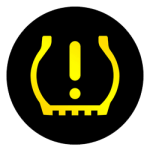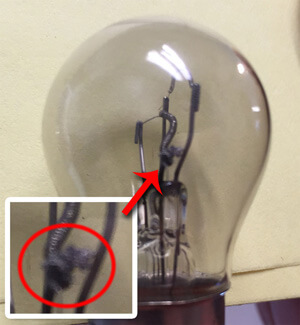Posted on 11/12/2015
Here at Motor Works, we always suggest a computerized all-wheel alignment when you get new tires. Not only does this extend the life of your new tires, it helps with vehicle stability, ride quality and fuel economy. We found this great video from CNET’s Brian Cooley explaining the basics of wheel alignment, including caster, camber and toe. Check it out
Posted on 11/11/2015

On this Veterans Day, Greg and the Motor Works family thank those who served for securing our future
Posted on 10/5/2015

If you see this light on your dash, it probably means your tires are low. So we woke up this morning to temperatures in the 40s in our area and have already received more than a few calls from our clients today telling us their tire pressure warning light has come on. Since this is the first morning at these cooler temperatures, it’s not uncommon at all. Remember, air pressure is temperature-sensitive, that is as the temperature decreases, the air pressure in your tire will be lower. If your tire pressure warning light comes on, it usually means the tires are low. The tires might look “normal” at first glance, but they’re probably low enough to trigger the warning system. This is called TPMS, which stands for Tire Pressure Monitoring System. Some cars have pressure sensors in each tire that communicate via radio to the car’s computer. Others measure the rotational speed of the wheel (which changes with tire pressure). If one or more of your tires are out of specif ... read more
Posted on 10/1/2015

Hi All! Sara here. With the first official week of fall come and gone, I thought it might be a good time to go over some pointers that will help keep your vehicle in tip-top shape through the inclement weather to come. Here are four easy things we can do (inspired by Autoblog.com): Check your tires for uneven wear or other damage Check your brakes — are they squeaking? Scraping? Grinding? Check your headlights — any bulbs out? “Cataracts” on the lenses? Check your windshield wipers — are they worn, cracked, or make ugly streaks on your windshield? Don’t hesitate to give us a call or visit our Appointments Page to set up a visit
Posted on 9/15/2015

We’re proud to announce that Motor Works and owner Greg Skolnik are featured in the latest episode of the “Remarkable Results” podcast. “Remarkable Results” features personal success stories of entrepreneurs from independent and aftermarket auto shops. Greg and podcast host Carm Capriotto discuss Motor Works’ history, core values and innovative programs. Have a listen! “Remarkable Results” – Episode 46
Posted on 6/8/2015

We never thought we’d see the day we needed to use an eye chart with our cars, but here we are. Standard on more and more of Honda’s newer model cars is their LaneWatch™ system, which uses a camera in the right side mirror to give you a look into your blindspot. Sometimes that system needs an “eye exam.” Specifically, when we replace the side mirror with the camera (or you manage to tinker around in the hidden diagnostic menus and wipe out the system by mistake) we need to re-aim the LaneWatch camera. Essentially it’s telling the camera what to look at and places the guidelines on the screen in the right locations. We accomplish that by setting up a specially-designed target about 15 feet (14.764 feet, to be exact) behind the front wheel and telling the system to take a picture. It then autom ... read more
Posted on 6/4/2015
There’s a very important part of your vehicle that most people don’t ever think about. It’s called the Differential and it allows your engine to drive wheels on opposite sides of the car at different speeds, allowing you to go around corners without destroying your tires or axles. The concept is exceedingly simple, and while it’s been enhanced quite a bit over the years, it’s not too different than what General Motors demonstrates in this video from 1937! Some engineering designs are pure art. Even if you’re not technically-inclined, this 8-or-so minute video puts it in layman’s terms and it’s fun to watch
Posted on 4/13/2015

In this case, together isn’t better at all! So… we ran through our full suite of tests to determine the cause — thinking perhaps that it was the brake lamp switch (which is a little plunger-type switch attached to the brake pedal.) Then we discovered something odd: when we would turn the parking lights and headlights on, the brake lights would come on and the van would be able to shift again. So we continued running down the problem and discovered that it was a simple fix: the brake light bulbs have two filaments in each bulb — one for the parking lights and one for the brake lights. Like any other light bulb, they tend to get hot when on for long periods of time. Turns out all the stop-and-go driving in this van actually caused the two filaments to melt together, completing the circuit when the parking lights were on and shorting out the brake light circuit. Total repair ... read more
Posted on 4/9/2015

We sometimes get questions from our clients about the “Maintenance Minder” system in most newer cars. While it’s true that cars have improved over the last 35 years that we’ve been caring for them, we’ve found that it’s important to service your vehicle on a regular basis. Here’s an excerpt from Greg’s upcoming book that will be published soon. Q) How often do I really NEED to change my oil? Some places say 3,000 miles and some ads say their oil can go 12,000 miles. What’s the right thing to do? A) You’ve hit on one of my pet peeves… Short answer is it depends. How often do you need to see your dentist? If you’re planning on keeping your set of pearly-whites for the remainder of your days, then I would say “on a regular basis”, right? Preventive maintenance is just that…Pre (meaning before) and event-ive (as in something happened)…before something happens. We go to the dentist on a regular basis because, while we may not like going, we know ... read more
Posted on 12/5/2014

Weird fix of the month – A first-time client was referred to us for our diagnostic abilities. His Odyssey was giving him grief with a reoccurring check engine lamp and the same evaporative system trouble codes. After 3 (or more) visits to the dealer (some of which included payment, I am told), we diagnosed this vehicle. A spider had found a home in a plastic vent fitting located inside the frame. The spider had woven several webs inside the fitting. You can see at least five separate webs inside the plastic fitting. These caused enough of a vapor flow restriction to keep setting trouble codes. The spider is gone, and so is the problem. We employ some of the brightest diagnosticians in the area. Bring it on